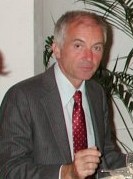The IASTED International Conference on
Optical Communication Systems and Networks
OCSN 2006
July 3 – 5, 2006
Banff, Alberta, Canada
TUTORIAL SESSION
Sensor Networks: Hype or Reality?
Abstract
Objectives
Timeline
Tutorial Materials
Target Audience
Background Knowledge Expected of the Participants
Qualifications of the Instructor(s)

Professor Stephan Olariu is a tenured full professor in Computer Science at Old Dominion University, Norfolk, Virginia. He is a world-renowned technologist in the areas of parallel and distributed systems, parallel and distributed architectures and networks. He was invited to and has visited more than 80 universities and research institutes around the world, lecturing on topics ranging from wireless networks and mobile computing, to biology-inspired algorithms and applications, to telemedicine, to wireless location systems, and demining. Professor Olariu is the Director of the Sensor Networks Research Group at Old Dominion University.
Professor Olariu earned his Ph.D. (Computer Science) in three years at the McGill University, Montreal. He has coauthored two books: Solutions to Parallel and Distributed Computing Problems: Lessons from Biological Sciences (with A. Zomaya and F. Ercal), Wiley and Sons, New York, 2000, ISBN 0471353523; Parallel Computation in Image Processing (with S. Tanimoto), Cambridge University Press; Wireless Sensor Networks and Applications, Wiley and Sons, New York, 2004; with four more books in preparation. He has also published 100+ journal articles and 100+ conference articles.
Stephan is an associate editor of Networks and International Journal of Foundations of Computer Science, serves on the editorial board of Journal of Parallel and Distributed Computing, and served (until January 2003) as Associate Editor of IEEE Transactions on Parallel and Distributed Systems and VLSI Design.
References
| [1] |











